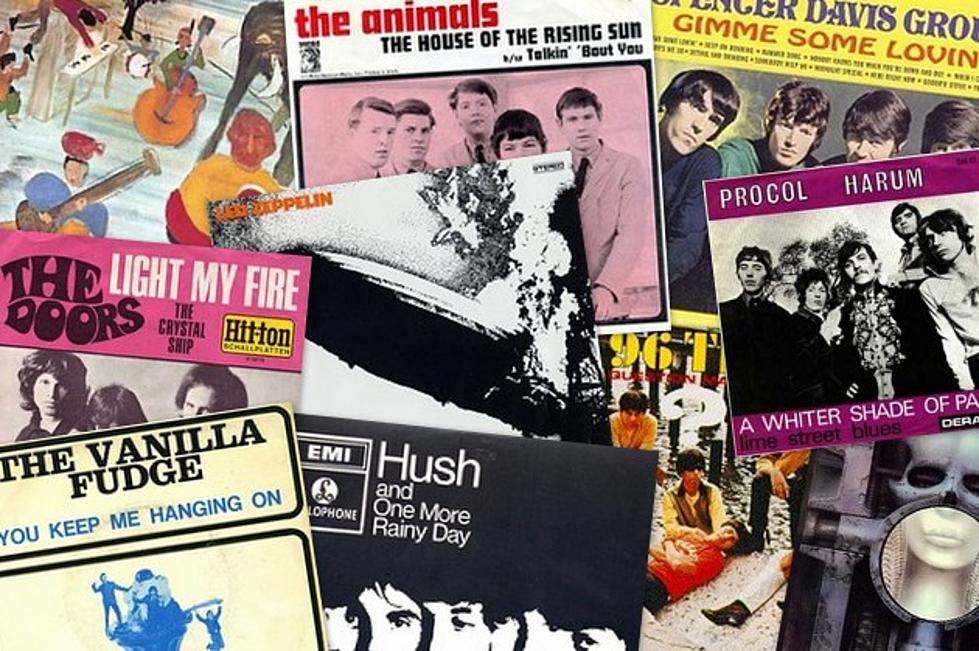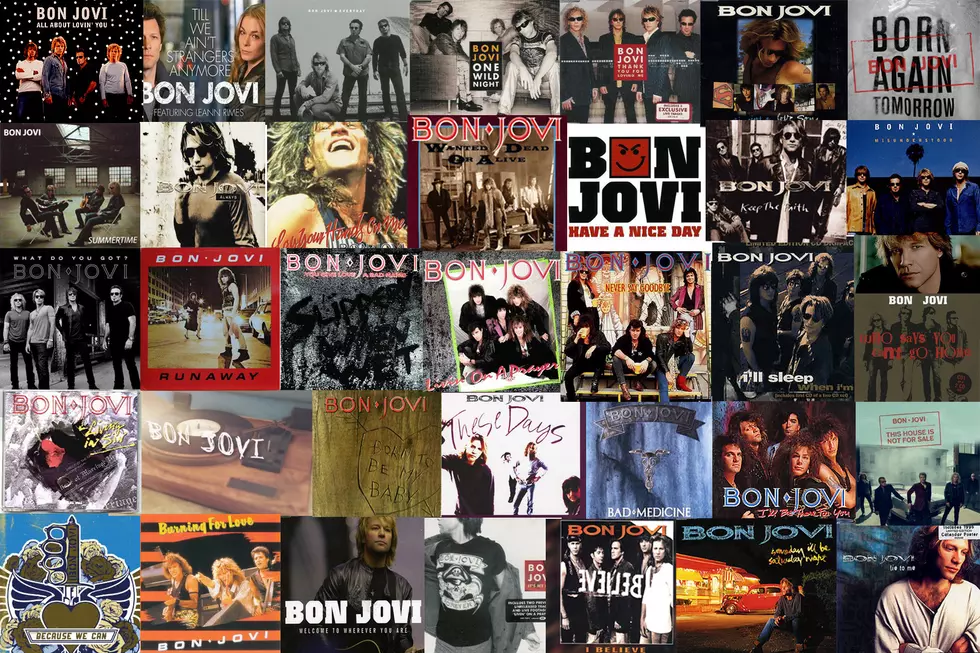
Top 10 Organ Rock Songs
It should come as no surprise that the majority of the Top 10 Organ Rock Songs come from the late-’60s, the heyday of the rock organ. Every band – whether they were garage rock or prog rock or soul rock or hard rock, whether they delivered their genius in extended jams or tidy singles – seemed to have an organ player. And this wasn’t just for background cushioning. No, the organ was often a prominent part, driving songs and entire albums. In this era, there are almost as many great organ riffs as guitar riffs. What follows are 10 classic tracks that would be unremarkable without an “organic” contribution.
- 10
‘Light My Fire’
The DoorsFrom: ‘The Doors’ (1967)
There are few rock and roll organ players more famous than Ray Manzarek, a testament to how important his playing was to the Doors’ sinister music. Most of ‘Light My Fire’ was written by guitarist Robby Krieger, but it is Manzarek’s rapid-fire organ lick that makes your ears perk up. The keyboardist has subsequently said the intro was inspired by Johann Sebastian Bach’s Two- and Three-part Inventions. Bach, you couldn’t get much higher.
- 9
‘96 Tears’
? and the MysteriansSingle (1966)
The story goes that this garage rock gem started as a poem written in 1962 by “Question Mark” (Rudy Martinez), and that it was going to be titled ‘69 Tears.’ Mr. Punctuation removed the innuendo and switched the numbers when he and the Mysterians recorded this No. 1 hit in early ’66. The tune’s signature, insistent organ part was played by Frank Rodriguez, who was only 14 years old when he created rock history on the Vox Continental.
- 8
‘Karn Evil 9’
Emerson, Lake & PalmerFrom: ‘Brain Salad Surgery’ (1973)
You can’t have the Top 10 Organ Rock Songs without a contribution from Keith Emerson, who might be the most gifted keyboardist in rock history. There’s no greater testament to his talents than this 30-minute epic. Emerson wrote the music for all three parts of ‘Karn Evil 9’ and even made his only ELP vocal contribution (modulated by his Moog) during the Second Impression. The best-known segment of the piece is the second part of the First Impression (“Welcome back, my friends…”), a classic rock radio staple which features slatherings of Emerson’s Hammond and Moog keyboards throughout.
- 7
‘The House of the Rising Sun’
The AnimalsSingle (1964)
An organ doesn’t kick off the song and it’s probably not the thing you noticed the first time you heard this Animals classic (that honor belongs to Eric Burdon’s rock quarry vocals). But Alan Price’s Vox Continental seeps in slowly, then builds carefully to match Burdon’s wail with its own soulful histrionics – enhancing the tragedy of this dirge. The funeral organ even gets the last, mournful word as the dust settles on the band’s titanic cover. Price was given sole credit for re-arranging this cover, simply because the names of all five band members wouldn’t fit and Alan came first alphabetically (oh, the ’60s…).
- 6
‘You Keep Me Hangin’ On’
Vanilla FudgeFrom: ‘Vanilla Fudge’ (1967)
The psychedelic rockers’ slowed-down-and-dirty take on the Supremes hit was more like Vanilla Sludge. Mark Stein’s haunting organ intro is the perfect counterpoint to the machine-gun drumming in store from Carmine Appice. Stein (who also sings) wafts his Hammond through the song, letting it hover inches above the proto-metal violence underneath. It all makes for the best bad dream you’ve ever had.
- 5
‘Your Time is Gonna Come’
Led ZeppelinFrom: ‘Led Zeppelin ’ (1969)
Zeppelin took plenty of shots for encouraging occult activities, but the brilliant John Paul Jones takes us to church on the extended intro of ‘Your Time is Gonna Come,’ from the band’s debut. Jones seems to be playing an organ as big as the Sistine Chapel when he slides into the chorus, gliding alongside Jimmy Page’s out-of-tune-but-it-works-anyway steel guitar. John Bonham made the track sound heavy; Jones made it sound enormous.
- 4
‘Chest Fever’
The BandFrom: ‘Music From Big Pink’ (1968)
The most psychedelic tune to come out of ‘Big Pink,’ ‘Chest Fever’ is a showcase for Garth Hudson. The Band’s organ player was like a mad scientist on stage, conjuring these swirling, slurring sounds from behind a bank of keyboards. In concert, Hudson would perform a lengthy organ solo before ‘Chest Fever,’ but on the recorded version, he delivers a short, but imposing, intro based on Bach’s ‘Toccata and Fugue in D Minor’ (yep, Bach’s back again). Then he kicks into the roaring riff that powers the entire song.
- 3
‘Gimme Some Lovin’’
The Spencer Davis GroupSingle (1966)
It’s a gimme that this stomp-along hit would be one of the Top 10 Organ Rock Songs. ‘Gimme Some Lovin’ has got a great groove, and Steve Winwood sure packed plenty of blue-eyed soul into his singing, but the organ riff makes it. More than just the riff – it’s the sound of that organ. Young Stevie wields his Hammond B-3 like a bulldozer. He could take out entire city blocks with that riff. Bone-shattering, teeth-ratting brilliance.
- 2
‘Hush’
Deep PurpleFrom: ‘Shades of Deep Purple’ (1968)
All hail the lord of the Hammond, Deep Purple’s late, great Jon Lord. His chugging organ erased all memories of anyone else associated with ‘Hush,’ from the man who wrote it (Joe South) or the guy who first had a hit with it (Billy Joe Royal). Deep Purple’s cover version gave the song a nerviness, thanks to Lord’s restless, staccato playing, which eventually spills out in a greasy solo for the ages. It became the band’s first U.S. hit, although it went curiously ignored in the U.K.
- 1
‘A Whiter Shade of Pale’
Procol HarumFrom: ‘Procol Harum’ (1967)
No, we couldn’t make it through the list without another band ripping of Johann Sebastian Bach – to great results. The elegiac Hammond M-102 organ part on Procol Harum’s landmark ballad was derived from Bach’s ‘Sleepers, Wake!’ and ‘Air on the G String.’ Matthew Fisher’s organ work flows like a river through the four-minute song, with the exception of when he emphasizes the choruses with that great zoom up the length of the keyboard. Decades later, ‘A Whiter Shade of Pale’ remains one of the 30 best-selling international hits of all time.
More From Ultimate Classic Rock









